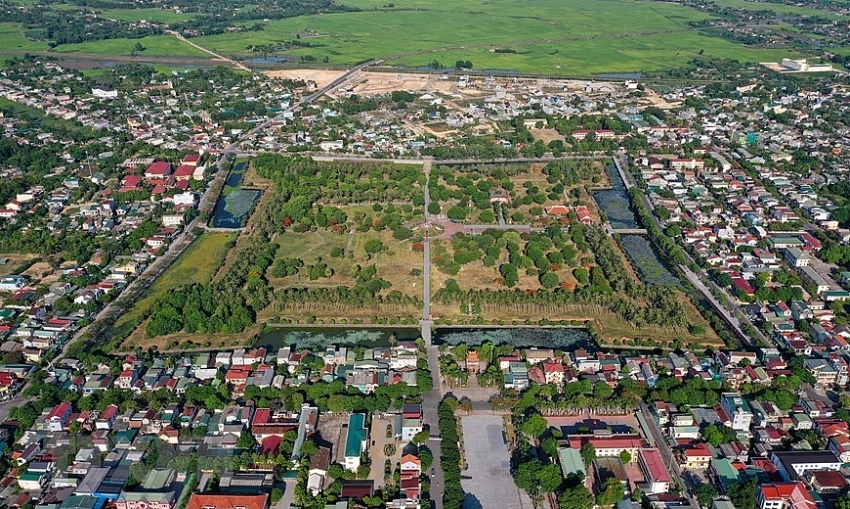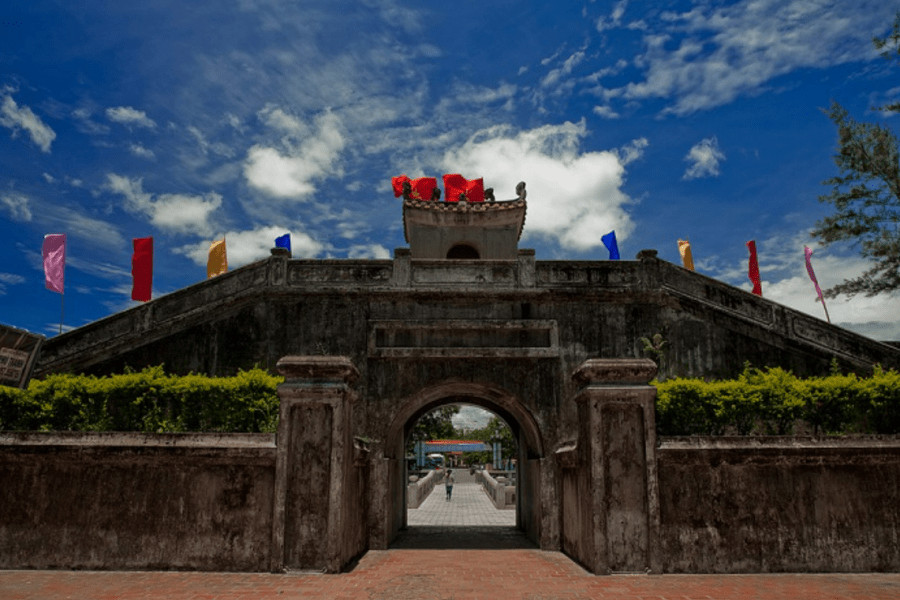Quang Tri Ancient Citadel
The Quang Tri Ancient Citadel, also known as the Quang Tri Old Citadel, is a Special National Heritage site located in the center of Quang Tri Town, Quang Tri Province, Vietnam.
History According to historical records, the Quang Tri Ancient Citadel was initially constructed in the early years of the Gia Long reign. It was originally situated in Tien Kien Ward (Triệu Thành – Triệu Phong), but in 1809, King Gia Long ordered its relocation to Thach Han Ward, which corresponds to its present-day location in Ward 2, Quang Tri Town. Initially built using earth, it was reconstructed with bricks under the reign of King Minh Mang in 1837. The citadel had a square shape with a perimeter wall spanning over 2,000 meters, a height exceeding 4 meters, and a base width of over 12 meters. It featured a moat system and four protruding fortresses at each corner. The architectural style of the citadel followed traditional Vietnamese fortress design, with large-fired brick walls, bonded with lime, molasses, and various other folk materials. It had four main gates, facing the east, west, south, and north.

During the years 1809-1945, the Nguyen Dynasty used it as a military stronghold and administrative headquarters. From 1929 onwards, the French colonial authorities constructed labor camps within its premises and transformed it into a detention facility for political dissidents.
Significant battles occurred at the Quang Tri Ancient Citadel during the Vietnam War, particularly in 1968 and 1972. After the “1972 Spring-Summer Campaign,” which heavily damaged the citadel, leaving only the east gate relatively intact and numerous sections of the walls, along with bomb craters surrounding it.
In the 1990s, the People’s Committee of Quang Tri Province undertook restoration efforts to preserve the citadel as a historical site. Several sections of the wall were restored, the four main gates were reconstructed, and a commemorative monument was erected at the center of the citadel to mark the 81-day and night battle in 1972. A modern museum was built in the southwestern corner. The entire area within the citadel, including pathways, was paved with cement, leaving patches of grass.
The Quang Tri Ancient Citadel holds a special place in the hearts of local residents as “Sacred Land” because every inch of the ground within the citadel contains traces of bombs, bones, and remains of soldiers from both sides. Today, it serves as the largest park in Quang Tri Town.

Notably, the Quang Tri Citadel is famous for being the site of the 81-day and night battle between the forces of the Liberation Army of South Vietnam and the combined forces of the United States and the Republic of Vietnam, with extensive artillery support and bombings from heavy artillery, warships, and B-52 bombers. This battle inflicted heavy casualties on both sides and was one of the fiercest engagements of the entire war. As a result, the Republic of Vietnam’s forces managed to recapture the Quang Tri Ancient Citadel and parts of the town, while the Liberation Army of South Vietnam retained control of the northern half of Quang Tri Province, strategic positions in the westernmost region of the province, and areas around the ancient citadel. The Quang Tri Citadel Museum still preserves relics and letters from soldiers to their families during this battle.
The Quang Tri Ancient Citadel stands as a testament to the turbulent history of Vietnam, from its imperial past to the struggles of the Vietnam War. It is a place of remembrance and reflection for visitors, offering insights into the resilience and determination of the Vietnamese people throughout their history.

